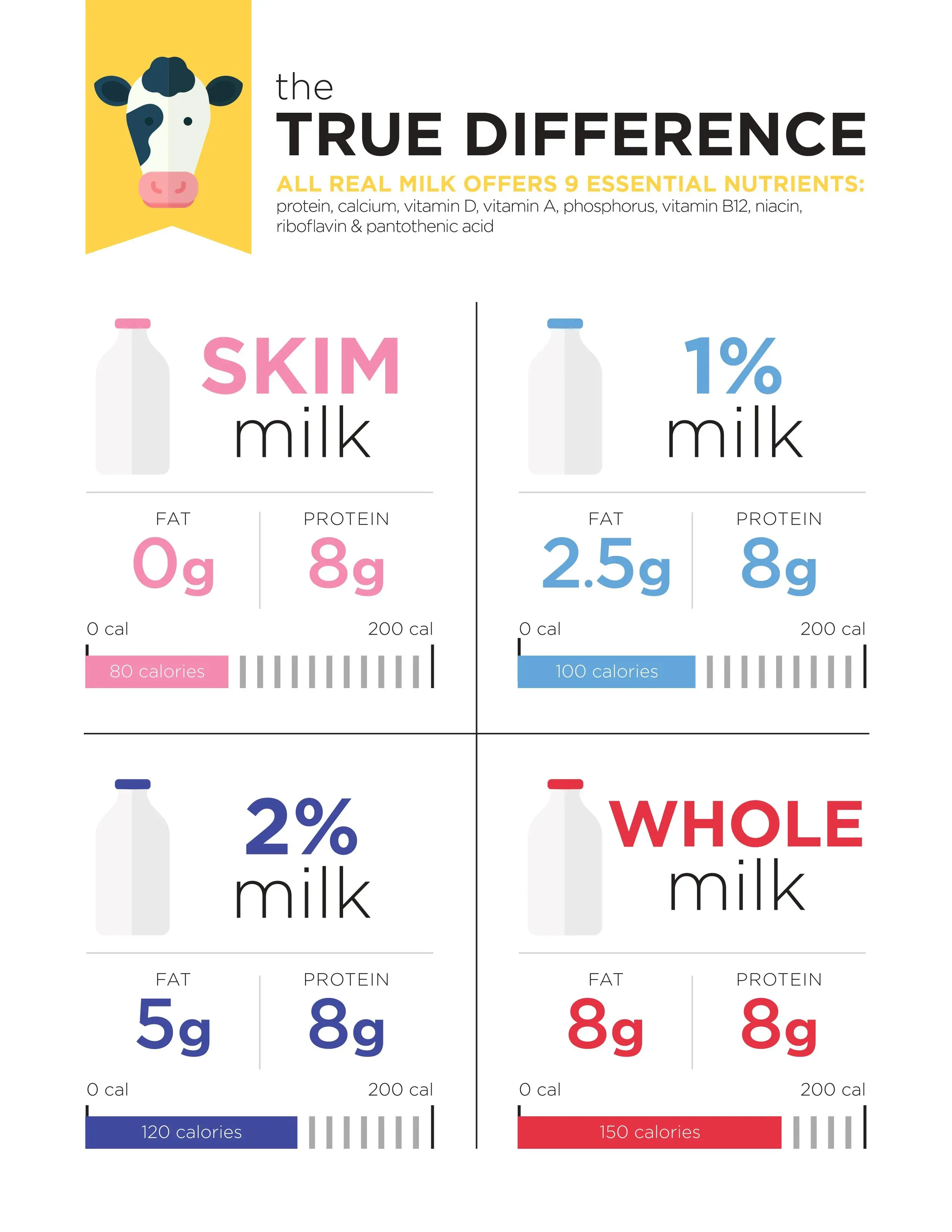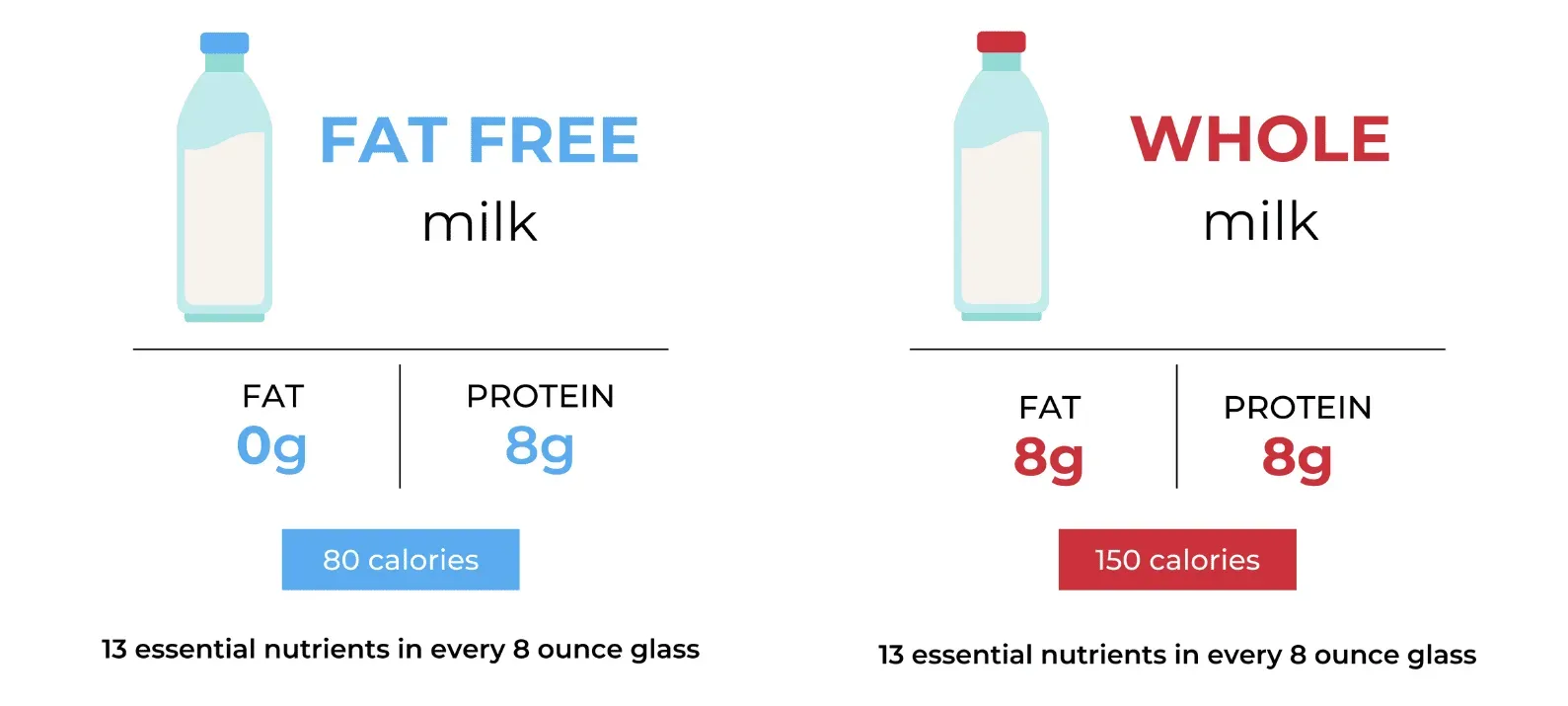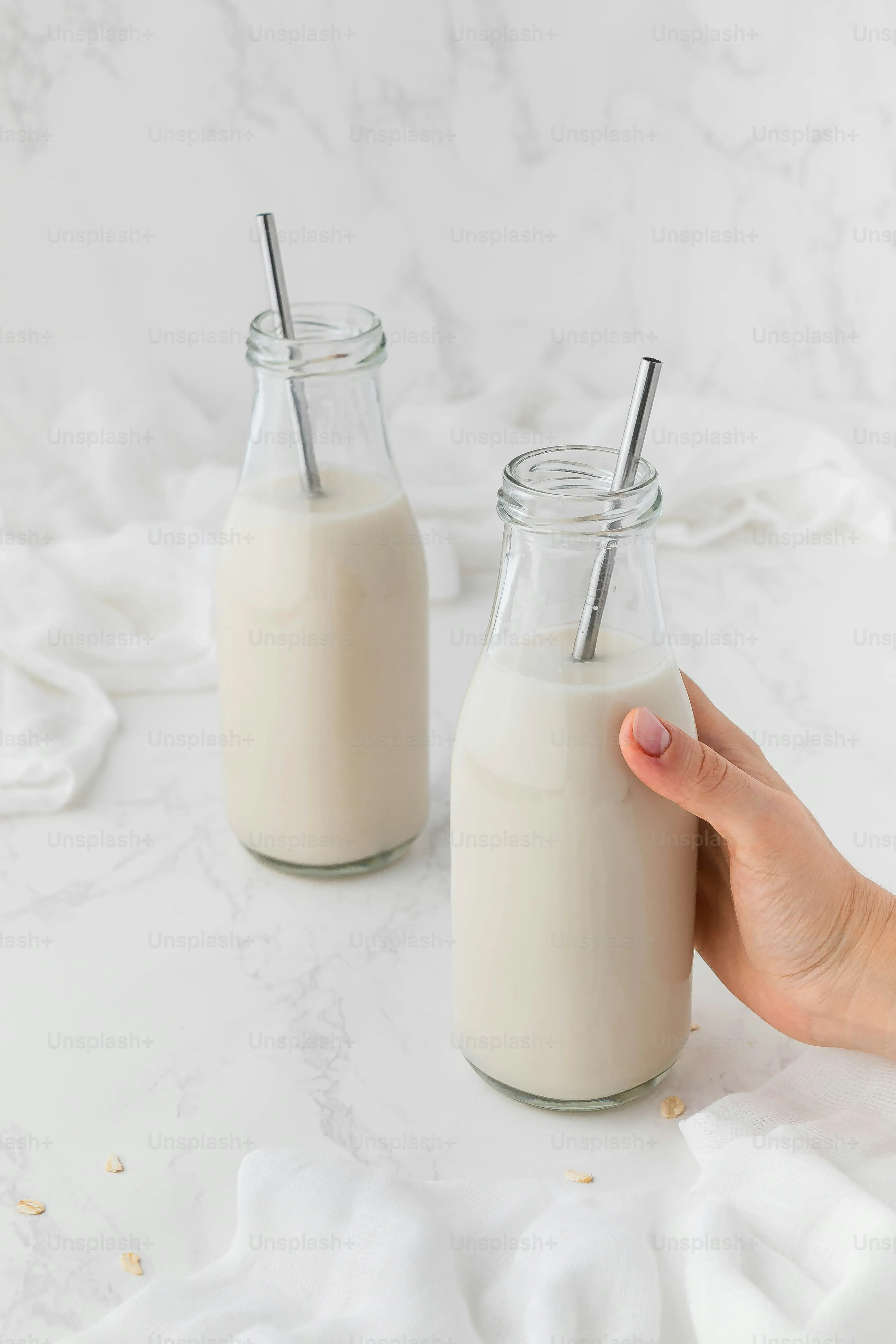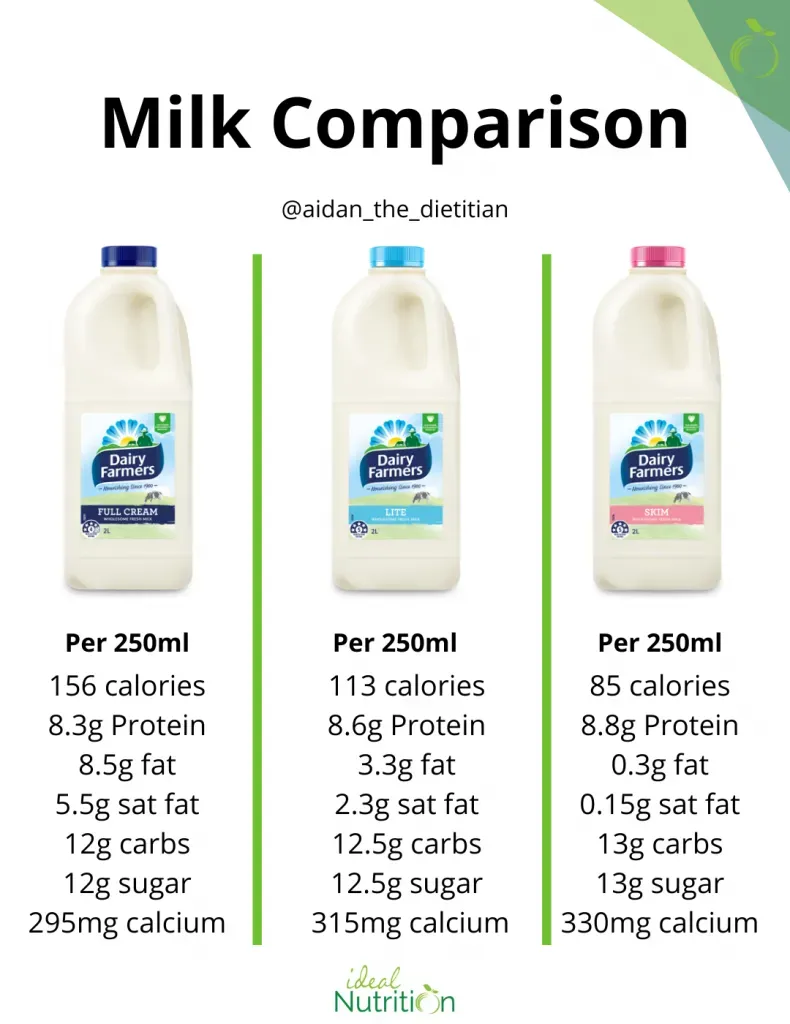Table of Contents
For years, the message was clear: low-fat dairy was the golden standard. Skim milk, 1% or 2% – that was the path to health, while whole milk was the villain, packed with saturated fat just waiting to clog your arteries. But hold on a minute. The science aroundwhole fat milk vs low fat milkhas gotten a bit more complicated lately. It turns out maybe things aren't as black and white as we were led to believe.
What's the Real Difference? Whole Milk vs Low Fat Milk Basics

What's the Real Difference? Whole Milk vs Low Fat Milk Basics
Starting with Whole Milk
let's get down to brass tacks. When we talk aboutwhole fat milk vs low fat milk, the most obvious difference is right there in the name: the fat. Whole milk is pretty much milk straight from the cow, processed minimally. By law, it has to contain at least 3.25% milk fat by weight. That might not sound like a huge number, but it makes a big difference in texture, taste, and calorie count compared to its leaner cousins. Think of it as the full-bodied version, creamy and rich because that fat hasn't been skimmed off.
Moving to Low Fat and Skim
Now, shift over to the low-fat options. This is where the processing steps in. To get 2% (reduced-fat) or 1% (low-fat) milk, processors remove some of the milk fat. Skim milk takes it even further, removing as much fat as possible, typically resulting in less than 0.5% fat. This skimming process changes the milk significantly. It loses that creamy texture and much of the richness. It also loses some naturally occurring nutrients that are tied to fat, like vitamins A and D, though these are usually added back in fortification.
Type of Milk | Approximate Fat Content | Approximate Calories per Cup |
|---|---|---|
Whole Milk | 3.25% or more | ~150 |
2% Milk | 2% | ~120 |
1% Milk | 1% | ~100 |
Skim Milk | Less than 0.5% | ~90 |
Beyond Just Fat and Calories
While fat and calories are the headline differences in thewhole fat milk vs low fat milkdebate, it's not the whole story. All types of cow's milk are good sources of protein, calcium, and riboflavin. They also typically contain vitamin B12 and potassium. As mentioned, vitamins A and D are fat-soluble, so when the fat is removed, those vitamins go with it. That's why federal regulations require milk to be fortified with vitamin D, and most milk is also fortified with vitamin A. So, nutrient-wise, they are often quite similar in terms of the big players, thanks to fortification, but the fat content is the fundamental split.
The Saturated Fat Question: Does Whole Fat Milk Harm Your Heart?

The Saturated Fat Question: Does Whole Fat Milk Harm Your Heart?
The Old Guard: Saturated Fat as Public Enemy Number One
For decades, the nutritional advice was pretty straightforward: saturated fat was bad news for your heart. The thinking went like this: saturated fat raises LDL cholesterol, the "bad" cholesterol, and high LDL cholesterol leads to clogged arteries and heart disease. Simple cause and effect, right? This is the foundation for why low-fat diets, and specifically low-fat dairy like skim milk, became the recommended choice over whole milk.
Dietary guidelines pushed hard for limiting saturated fat intake, often suggesting it should be no more than 10% of your daily calories, sometimes even lower. Whole milk, with its higher saturated fat content compared to 1% or skim, was seen as a significant contributor to this "bad" fat intake. Swappingwhole fat milk vs low fat milkwas one of the easiest changes people were told to make to protect their cardiovascular health.
Newer Research Throws a Wrench in the Works
But science rarely stands still, and what we thought we knew about saturated fat, especially dairy fat, is evolving. More recent large-scale studies and meta-analyses haven't found the strong, direct link between saturated fat intake and heart disease that was previously assumed. Some research suggests that the *type* of saturated fat matters, and the "food matrix" it comes in – meaning the other nutrients packaged with it – plays a role.
Dairy fat, for instance, contains a complex mix of fatty acids and other compounds. Some studies even hint that certain fatty acids in dairy might be neutral or even beneficial for heart health markers. It's a far cry from the blanket condemnation of saturated fat we heard for years. This doesn't mean you should start chugging butter, but it does mean the simple equation of "whole milk equals heart attack risk" might need some serious recalculating.
Beyond Fat: Surprising Research on Whole Fat Milk and Health

Beyond Fat: Surprising Research on Whole Fat Milk and Health
Beyond Just Fat: Unexpected Findings
so if the saturated fat story isn't as simple as we thought when it comes towhole fat milk vs low fat milk, what else is going on? This is where things get interesting, and frankly, a little head-spinning if you've been following the old advice. Newer studies are pointing to some surprising associations with full-fat dairy. We're talking potential links to lower risk of type 2 diabetes, better weight management (yes, you read that right), and even a reduced risk of metabolic syndrome. It seems the complex package of nutrients in whole milk – not just the fat, but also certain fatty acids, proteins, and other bioactive compounds – might interact in ways we didn't appreciate before. It’s like focusing only on the engine size of a car and ignoring the suspension, braking system, and aerodynamics; you miss the whole picture of how it actually performs.
Potential Unexpected Benefits Linked to Full-Fat Dairy:
- Lower risk of developing type 2 diabetes in some populations.
- Association with lower body weight and less weight gain over time in observational studies.
- Potential links to a reduced risk of metabolic syndrome components.
- Higher intake of fat-soluble vitamins (A, D, E, K) compared to skim, even with fortification.
Who Should Stick to Low Fat or Skim Milk?

Who Should Stick to Low Fat or Skim Milk?
When Calories Count Most
so maybe whole milk isn't the dietary demon it was once painted to be. But that doesn't mean it's the automatic best choice for everyone. There are still plenty of scenarios where opting for low-fat or skim milk makes perfect sense. For instance, if you're strictly managing your calorie intake, maybe for weight loss goals, the difference of 30-60 calories per cup between whole milk and skim adds up. Drink a couple of glasses a day, use it in cereal, coffee, cooking, and suddenly you've added a few hundred extra calories without much thought. Every calorie counts when you're in a deficit, and swapping from whole fat milk vs low fat milk is an easy way to shave some off without losing the protein and calcium boost.
Navigating Specific Health Needs
Beyond just general calorie counting, certain health conditions might mean your doctor or a registered dietitian still recommends limiting saturated fat intake more strictly. If you have familial hypercholesterolemia, for example, where your body handles cholesterol differently, saturated fat can have a more pronounced impact on your LDL levels regardless of the newer research on the general population. People with specific malabsorption issues or certain digestive disorders might also find lower-fat options easier to digest. It's not about one size fits all; it's about what works for *your* body and *your* health profile, often based on professional medical advice.
Consider these points if you're debating your dairy aisle choice:
- Are you on a strict calorie budget?
- Do you have a medical condition where saturated fat restriction is specifically advised by your doctor?
- Does your overall diet already contain significant amounts of saturated fat from other sources?
- Do you simply prefer the taste and texture of lower-fat milk? (Yes, preference is valid too!)
Choosing Your Pour: Whole Fat Milk vs Low Fat Milk for Your Diet

Choosing Your Pour: Whole Fat Milk vs Low Fat Milk for Your Diet
So, after sifting through the fat content, the calorie counts, the shifting science on saturated fat, and the surprising potential benefits of full-fat dairy, you're still faced with the dairy aisle decision:Choosing Your Pour: Whole Fat Milk vs Low Fat Milk for Your Diet. It really boils down to your individual circumstances, dietary goals, and yes, even taste preference. If you're watching every single calorie or have a specific medical reason advised by a professional to limit saturated fat strictly, the lower-fat options remain a solid, nutrient-rich choice. However, if you're generally healthy, your overall diet is balanced, and you appreciate the satiety and taste of whole milk, the newer research suggests it's likely not the dietary villain it was once made out to be and can fit comfortably into a healthy eating pattern. Think about your total diet picture, not just this one food item in isolation.
Making Your Milk Choice: It's Not Just About Fat
So, where does this leave us in the whole fat milk vs low fat milk debate? The old advice pushing everyone towards skim might be outdated for many. While low-fat options remain sensible for those managing calorie intake or specific health conditions, the fear surrounding whole milk's saturated fat seems less justified than once thought for healthy individuals. Research suggests that dairy fat behaves differently than fat from other sources, and whole milk might even offer benefits like better satiety and potentially reduced risk of certain metabolic issues. Ultimately, the best choice isn't a one-size-fits-all answer. Consider your personal health goals, dietary needs, and overall eating pattern. It's less about declaring one type inherently "better" and more about how it fits into your picture.
